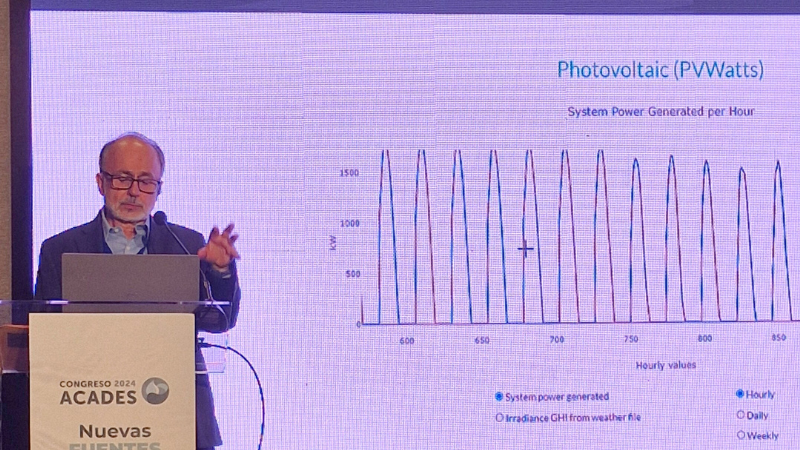Columbia’s Vasilis Fthenakis Launches Solar Desalination Analysis Tool for Chile
He presented the tool during the Chilean Association of Desalination and Reuse (ACADES) congress, attended by more than 500 participants.

Vasilis Fthenakis, one of the world’s foremost experts on solar energy and director at Columbia’s Center for Life Cycle Analysis, presented in Santiago the open-source Solar Energy Desalination Analysis Tool (SEDAT) that he and collaborators Greg Yetman and Zhuoran Zhang designed and adapted specifically for Chile.
SEDAT-Chile was one of the nine projects awarded financing under the Columbia President's Global Innovation Fund (PGIF) in 2022. SEDAT, originally developed at Columbia with US Department of Energy funding, allows for techno-economical evaluation of desalination technologies and selection of regions with the highest potential for using solar energy to power desalination plants. The tool was then adapted to the Chilean context, using country maps and related solar, water, and desalination information provided by the Chilean Association for Water Desalination and Reuse, ACADES.
Climate change has led to drought in many parts of Chile, and there is growing interest for desalination technologies powered by solar. Desalination requires high amounts of energy and northern Chile’s arid desert area boasts some of the world’s best solar potential. The north is also home to most of Chile’s mining activity, which requires significant water resources. At the same time, Chile is a world-leading supplier of copper and lithium – two critical minerals in the clean energy transition.
The user-friendly SEDAT tool, available to access at this link, allows users to determine possible locations for solar-based desalination plants on a map, identifying the distance from the sea and from other power plants, water prices for the area based on World Bank data to obtain market potential analysis, and the potential for solar desalination. It allows users to compare and contrast the best technologies for solar power and for desalination, based on the characteristics of the possible location.
In summary, SEDAT integrates various layers of large volumes of geospatial data with Python-based models of solar energy and desalination technologies in order to simplify the planning, design, and valuation of solar desalination systems. Software users can investigate pathways to reduce the cost of solar desalination technologies while identifying key locations for reaching techno-economic targets.
Fthenakis launched the Chile-specific tool at the ACADES Congress held on March 20-21 in Santiago. The event’s main theme was “New sources of water for Chile,” bringing together more than 500 participants that came to see presentations by more than 20 international experts hailing from countries such as Argentina, Australia, Italy, Japan, Mexico, Scotland, Spain, and the United States, and as well as more than 60 national experts including parliamentarians and business leaders from various industries in which water plays a key role, such as agriculture, energy, and mining.
“The real cost of water is the cost of running out of it and with this Congress the invitation is to listen, talk and learn from other experiences, opening ourselves to new technologies. Because when we work as a team, it is possible to do great things,” ACADES president Carlos Foxley said during the event.